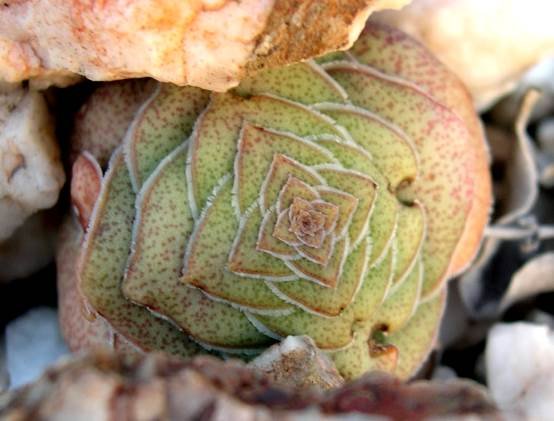Crassula montana

Author: Ivan Lätti
Photographer: Louis Jordaan
This elegantly shaped Crassula leaf rosette photographed near Vanwyksdorp in the Little Karoo in the Western Cape has pointed leaves that lie flat on the lower leaves in the fashion of the miskoekie or Crassula hemisphaerica.
The pointed leaf-tips suggest that this may be the less known C. montana, of which there are two subspecies in the Western Cape: C. montana subsp. quadrangularis continues into the Eastern Cape, while subsp. montana is also found in the Northern Cape.
Subsp. quadrangularis has roughly triangular leaves like the plant in picture, but they do not touch the lower leaves so consistently and the leaf dots are more concentrated in a single row near the leaf margin, although not consistently in all plants. Subsp. montana often has leaf elongation beyond the triangular, usually with raised leaf-tips, dots either in marginal rows or scattered and leaf colouring quite different to C. hemisphaerica.
While this plant may be C. montana, the possibility of hybridisation with C. hemisphaerica should be considered. The distribution ranges of both species include Vanwyksdorp.
For the record, C. montana becomes 2,5 cm tall. It becomes conspicuous in parts of the Great Karoo when flowering white in early summer.
The habitat is mountain slopes, secluded rocky places or cliffs, sometimes grouped among cliff hanger plant species. The montana specific name reflects this habitat. Neither subspecies of C. montana is considered to be threatened in its habitat early in the twenty first century (Smith, et al, 2017; Shearing and Van Heerden, 2008; Bond and Goldblatt, 1984; Van Jaarsveld, 2002: Cliff Hangers. Veld en Flora. pp 154-158; iNaturalist; http://redlist.sanbi.org).

